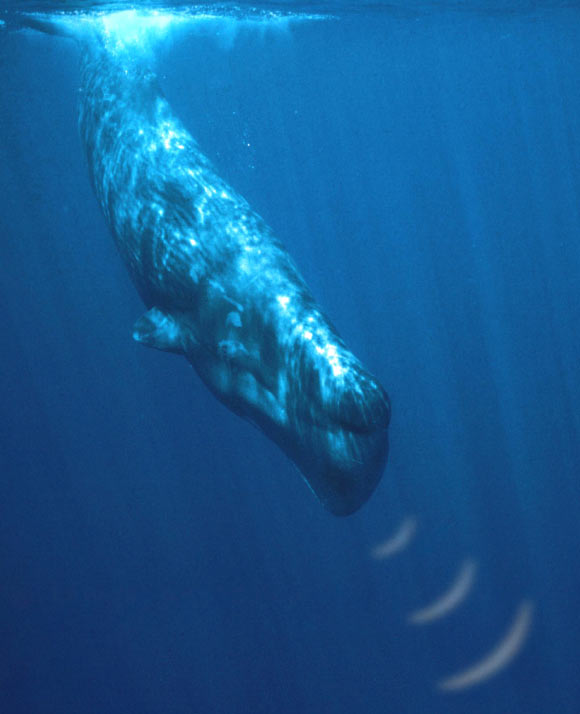Toothed whales — apex predators varying in size from 40-kg porpoises to 50-ton sperm whales — use narrow beams of high intensity sound to echolocate prey, according to a new study.
Toothed whales comprise 75 species that are adapted to a highly diverse set of feeding niches ranging from flooded forests and river systems to the deep ocean.
These animals use four different biosonar signals for echolocating prey: (i) sperm whales produce broadband clicks that reverberate within the head to produce a multi-pulsed click; (ii) beaked whales produce frequency-modulated clicks; (iii) most dolphins rely on a simple broadband click; (iv) whereas porpoises, franciscana dolphins, pygmy and dwarf sperm whales generate narrowband high-frequency clicks.
The new study, led by Dr. Frants Jensen of Aarhus University and the University of St Andrews Scottish Oceans Institute, sheds light on how these creatures adapted their sonar abilities to occupy different environments.
“Approximately 32 million years ago, the ancestors of toothed and baleen whales diverged and evolved the ability to echolocate — to send out sound pulses and listen for the returning echoes from objects and prey in their environment,” the researchers said.
“This new sense allowed these animals to navigate and find food in dark or murky waters, during the night, or at extreme depths.”
“Since then, this evolutionary step has allowed the animals to occupy an amazing diversity of habitats, from shallow freshwater rivers to the great ocean deeps.”
The study reveals that as the animals grew bigger, they were able to put more energy into their echolocation sounds, but surprisingly, the sound energy increased much more than expected.
“Normally, organs tend to grow proportionally to the rest of the body, but as echolocating whales became larger, their sound generating structures started taking up more and more of the body,” said Aarhus University’s Professor Peter Teglberg Madsen, co-author of the study.
“This likely reflects an evolutionary pressure for long-range prey detection — it allowed larger whales to find prey further away, letting them hunt more efficiently in deep water,” Dr. Jensen said.
The pinnacle of this evolutionary push is the sperm whale, where the nose used to generate and focus sonar pulses can make up as much as one-third of the body of adult males.
While size has a big influence on how loud echolocation signals are, the animals used a consistently narrow biosonar beam to inspect their surroundings, akin to using a narrow-beam flashlight to search for food in the dark.
“This is really similar to how our own vision works — we see best in just a narrow field of view which we turn towards whatever we want to look at,” said co-author Dr. Mark Johnson, a researcher at the University of St. Andrews.
“These narrow sonar beams may help animals make sense of complex environments with lots of echoes.”
“Using a narrow sonar beam has other advantages as well. Focusing the sound energy in one direction also helps increase the range at which prey can be detected and thus could lead directly to higher foraging rates — provided the beam doesn’t get too narrow,” Dr. Jensen said.
The findings appear online this week in the journal Current Biology.
_____
Frants H. Jensen et al. Narrow Acoustic Field of View Drives Frequency Scaling in Toothed Whale Biosonar. Current Biology, published online November 15, 2018; doi: 10.1016/j.cub.2018.10.037








